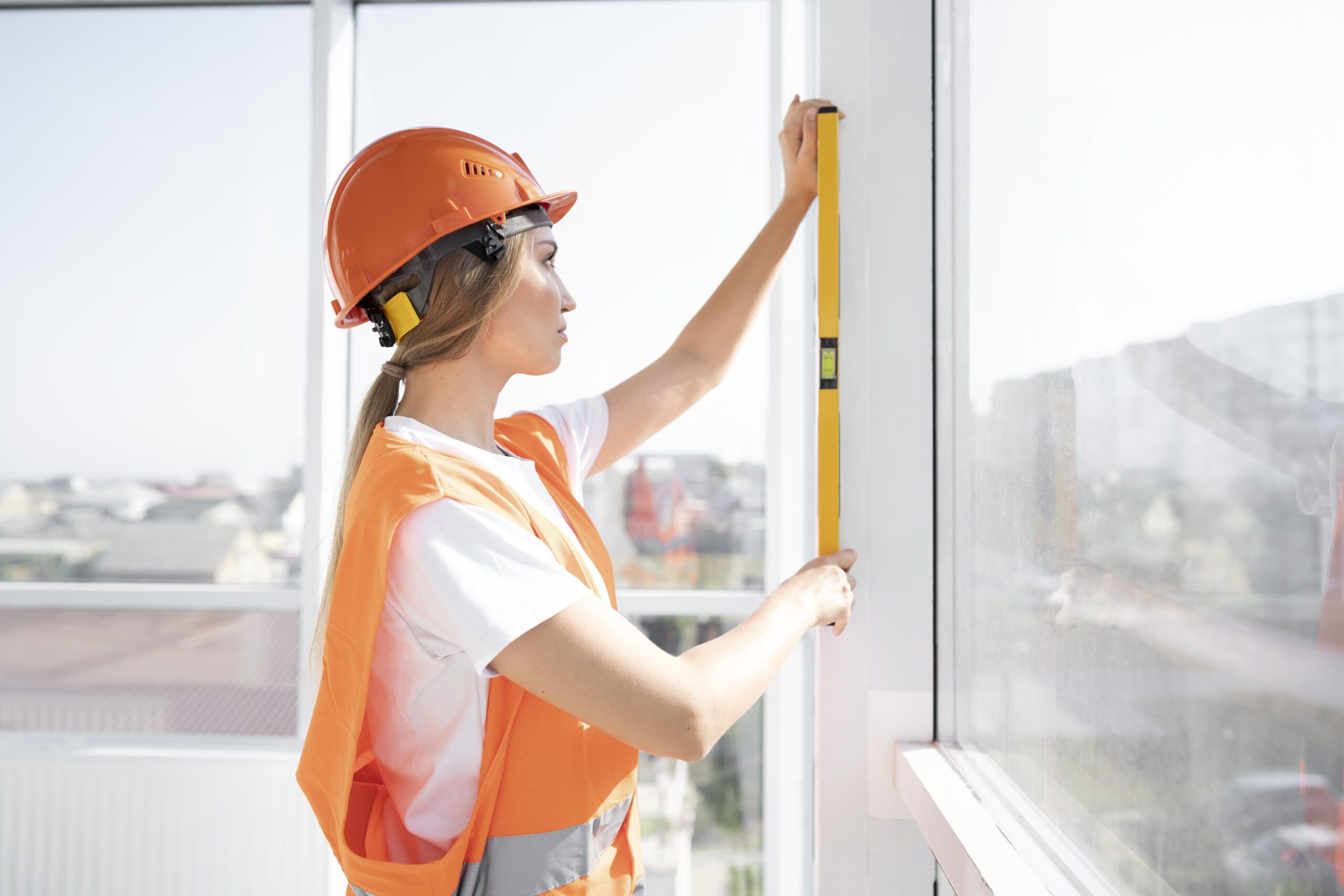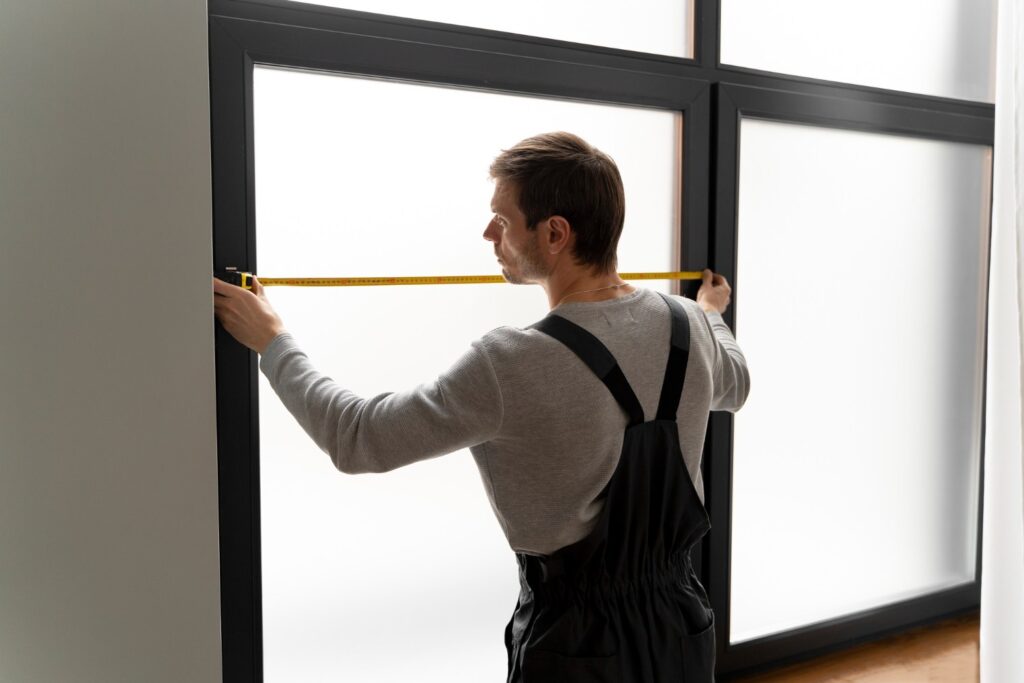Windows do more than just add beauty to your home. They also serve important jobs in ventilation, energy efficiency, and the value of your home. But when your windows start to feel drafty, worn down or too dated, it may be time for a new replacement. But what is the real cost of replacing windows?
Thank you for reading this post, don't forget to subscribe!This blog post will dissect the many reasons why the cost of window replacements is affected by these, and other, considerations and will show you how you can budget for this repair in your home. Whether you are looking to replace a single window or you are about to replace every window in your home, we can service your needs.
Average Cost Overview
Window replacement cost can vary widely for a number of reasons. Nationally, window replacement costs range from $300 to $1,500 per window, including installation. To replace the windows in a typical house, you may spend $600 to $1,000 per window, depending on the size of the job and the type of materials you use.
For a house with 10 windows, the cost would run anywhere from $3,000 to $15,000 — and premium or customized products would push the price higher. Labour is usually 40-50% of the cost so installation is important.
Cost Factors
Knowing what influence the cost of replacing windows can help in budgeting for your project.
Window Types
The style of window you choose will have a big impact on the cost. Below are the average prices of popular window styles:
Double-Hung Windows ($400 to $1,000): The most ubiquitous type, with two operable sashes that slide up and down.
Casement Windows ($350–$800): Attached to one side, they swing open from the other side, generally more efficient than double-hung windows.
Bay Windows ($1,200 to $3,600): Three windows that project outward to make an architectural statement and let in more light.
Sliding Windows ($450 to $1,300): Sashes that slide left or right. It’s a quick solution, especially for bigger window slots.
Picture Windows ($600 to $1,500): Fixed windows that don’t open, great if you want to let natural light in and have a clear view.
Materials
Window Frame Material can be the biggest factor in pricing and longevity.
Vinyl ($250 to $700 per window): Inexpensive, low maintenance and energy efficient.
Wood ($600 to $2,000 per window): Gorgeous and classic, but costlier and more maintenance-heavy.
Aluminum ($400 to $1,200 per window): Sleek and contemporary but less energy-efficient.
Fiberglass ($500 to $1,500 a window): Long-lasting; good insulator; won’t expand or contract with temperature fluctuations.
Various materials are best suited to different climates and needs. So, for example, with vinyl, most people would say that it’s good and cost-effective for most homes, but if you’re trying to replicate the authenticity of a historic home, wood might be a better choice.
Glass Options
The kind of glass you choose will also add to the cost, especially if you chose features such as energy efficiency.
Double-Pane Glass ($350 to $850): Often selected for being energy efficient.
Triple-Pane Glass ($500 to $1,200): Provides the best insulation from the cold and sound but is the most expensive.
Low-E Coatings (Add $50–$150 per window): Reflects heat and UV rays to lower energy costs.
Tempered or Laminated Glass (Add $100 to $300 per window): Shatter-resistant, for better security and safety.
Select energy-efficient glass types to save on heating and cooling expenses in the long-term.
Size and Quantity
Not to mention, replacing larger windows just naturally costs more in the additional materials and labor needed. For example:
- A basic small window could be priced at between $300–$700 installed.
- A bigger window could cost up to $2,500 or more, depending on modifications.
- and replacing multiple windows at one time can often lower the per-unit cost since contractors may be willing to offer volume discounts.
Labor Costs
Labor costs could fall anywhere between $100 and $300 per window, depending on the complexity of the work and your location. They also have higher labor rates (due to stronger single warehouses, harder NYC labor pool)We found that sites that have more expensive cost of living (urban sites) also tend to have a higher cost per head in labor rates. Elaborate installations (bay window, custom windows, etc.) may also require additional work by a specialty contractor, adding to labor costs.

Additional Costs
Other costs can add up during the course of the project, in addition to the windows themselves.
Permits ($50–$200): Some locations require a permit to replace windows, particularly if structural alterations are necessary.
Old Window Removal and Disposal ($50 to $150 per window): While most contractors include the price of this service in their quote, some don’t.
Trim Work and Painting ($150–$500 per window): This step is only needed if your new windows are not the exact fit of the existing frame.
Weatherproofing/Insulation ($100–$300): Secures the windows for energy efficiency and airtightness after installation.
Do-It-Yourself vs Professional Installation Another aspect to consider is whether you would install the feature on your own or hire someone.
Wondering if you should attempt the installation yourself? Here’s a brief breakdown of DIY vs. professional installation.
DIY Pros and Cons
Pros:
- Lower upfront costs.
- Exercise full control on the process.
Cons:
- Potential for improper installation – which may result in drafts, leaks, or damaged windows.
- Physically demanding both in terms of time and labor.
No warranty on labor.
The Pros and Cons of Professional Installation
Pros:
- Installing it correctly, and making fewer mistakes are other advantages of expertise.
- Typically comes with a labor warranty.
- Saves time and effort.
Cons:
- Labor costs; increased expense.
For many homeowners, professional install offers the best overall value, especially for multiple or large windows.
Getting Accurate Estimates
To ensure you receive the best return on your investment for your project, use the following as a guide when obtaining quotes:
Obtain Multiple Quotes: Contact a minimum of three contractors or companies for estimates.
Check References: Confirm that the contractor is properly licensed, insured, and knowledgeable about window installation.
Request for Itemized Estimates: The costs of materials, labor, and any additional fees should be itemized to give you a clear picture.
Review and Testimony: People leave reviews and comments online which you can use to see how reliable the company is.
Following these steps will ensure you get reliable work and won’t be surprised by any hidden costs.
ROI and Long-Term Savings
Install new windows is an expensive investmnet, but it will pay off in the longterm.
Energy Efficiency: You can save 20-30% on your heating and cooling costs with energy-efficient windows that quickly pay for them.
Higher home value: Upgrade with new windows and receive 70–80 percent return on investment (ROI) if you put your home on the market.
Less Maintenance: Long-lasting materials such as vinyl and fiberglass parts make for lower maintenance.
When you select premium materials and energy efficient options, you’ll see the savings add up, instantly – and over the life of your home!
Final Thoughts
Changing your windows is an investment that improves your home’s appearance, comfort and value. From the type of window to the material that it’s made from to labor charges, every variable directly affects the cost of your new windows. To avoid anxiety on your remodeling project, start with understanding your needs, research your options, and get what you pay for.
When you’re ready to take the next step, contact local contractors for quotes today. With the perfect windows, your home’s value, appearance and efficiency will last for many years.



